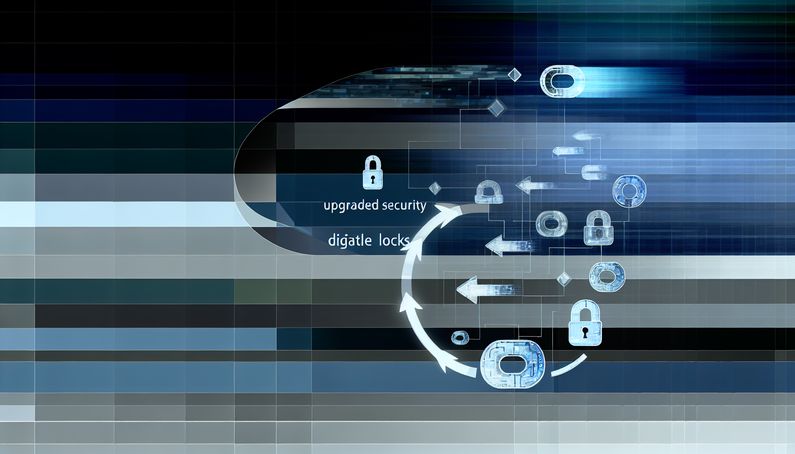
Microsoft's Strategic Move: Phasing Out PowerShell 2.0 for Enhanced Security
Microsoft’s decision to remove PowerShell 2.0 from Windows 11 and Windows Server 2025 marks a significant shift in its approach to security and modernization. PowerShell 2.0, a tool that has been around for over a decade, is now considered a security liability due to its outdated features. By phasing it out, Microsoft aims to reduce vulnerabilities and enhance the security posture of its operating systems. This move is part of a broader industry trend to eliminate outdated software components to mitigate security risks (PUPUWEB). However, this change poses challenges for organizations that rely on legacy systems, as many older applications and scripts are built on PowerShell 2.0. Administrators will need to update or replace these components to ensure compatibility with newer PowerShell versions (Windows Forum).
Implications for Users and Organizations
Security Enhancements and Risk Mitigation
The removal of PowerShell 2.0 from Windows 11 and Windows Server 2025 is primarily driven by security considerations. PowerShell 2.0, released over a decade ago, lacks the robust security features present in newer versions like PowerShell 5.1 and 7.0. This older version has been identified as a potential vulnerability, as it can be exploited by malicious actors to gain unauthorized access to systems. By eliminating PowerShell 2.0, Microsoft is reducing the attack surface and enhancing the overall security posture of its operating systems. This move aligns with the broader industry trend of phasing out outdated software components to mitigate security risks (PUPUWEB).
Impact on Legacy Systems and Software
Organizations that rely on legacy systems and software may face challenges due to the removal of PowerShell 2.0. Many older applications and scripts were built to operate with this version of PowerShell, and their functionality could be disrupted if they are not updated. Administrators will need to conduct a thorough inventory of their systems to identify dependencies on PowerShell 2.0 and develop a plan to update or replace these components. This process may involve rewriting scripts to be compatible with newer versions of PowerShell or seeking updated software from vendors (Windows Forum).
Opportunities for Modernization
While the removal of PowerShell 2.0 presents challenges, it also offers an opportunity for organizations to modernize their IT infrastructure. By transitioning to newer versions of PowerShell, organizations can take advantage of enhanced features and capabilities that improve automation, configuration management, and security operations. This modernization effort can lead to reduced technical debt and a more streamlined IT environment. Organizations that proactively embrace this change can position themselves to better leverage future technological advancements (UNDERCODE NEWS).
Vendor Coordination and Support
The removal of PowerShell 2.0 necessitates coordination with software vendors to ensure compatibility with updated systems. Many Microsoft server products, such as Exchange, SharePoint, and SQL, have already transitioned to newer versions of PowerShell. However, third-party tools may still rely on PowerShell 2.0. Organizations should engage with their vendors to determine if updates or newer releases are available that eliminate the dependency on PowerShell 2.0. In cases where vendors have not yet addressed this issue, organizations may need to explore alternative solutions or workarounds (Microsoft Support).
Strategic Implications for IT Leadership
For IT leaders, the removal of PowerShell 2.0 is a catalyst for strategic decision-making. The transition to newer PowerShell versions requires careful planning and resource allocation. IT leaders must weigh the costs of migration against the risks of maintaining outdated and insecure systems. This decision-making process should be informed by a comprehensive risk assessment and alignment with organizational goals. Additionally, IT leaders should consider the broader context of Microsoft’s ongoing efforts to streamline and secure its operating systems, as this may influence future IT strategies (WebProNews).
Training and Skill Development
As organizations transition away from PowerShell 2.0, there is a need for training and skill development among IT staff. Administrators and developers must become proficient in using newer versions of PowerShell to effectively manage and automate systems. Training programs should focus on the enhanced features and capabilities of PowerShell 5.1 and 7.0, as well as best practices for secure scripting and automation. By investing in skill development, organizations can ensure a smooth transition and maximize the benefits of modern PowerShell versions (M365 Admin).
Regulatory and Compliance Considerations
The removal of PowerShell 2.0 may have implications for regulatory compliance, particularly in industries with stringent security requirements. Organizations must ensure that their systems and processes remain compliant with relevant regulations and standards. This may involve updating documentation, conducting security audits, and implementing additional controls to address any gaps introduced by the transition. Compliance efforts should be integrated into the overall migration strategy to minimize disruptions and ensure continued adherence to regulatory requirements (TeamWin).
Future Outlook and Industry Trends
The removal of PowerShell 2.0 is part of a broader trend in the tech industry towards modernization and enhanced security. As organizations continue to adopt cloud computing, automation, and advanced analytics, the demand for secure and efficient scripting tools will grow. PowerShell’s evolution reflects this trend, with newer versions offering improved functionality and security features. Organizations that stay ahead of these trends by adopting modern tools and practices will be better positioned to capitalize on emerging opportunities and navigate the challenges of the digital landscape (How-To Geek).
Conclusion
The removal of PowerShell 2.0 from Windows 11 and Windows Server 2025 has significant implications for users and organizations. While it presents challenges, particularly for those reliant on legacy systems, it also offers opportunities for modernization and enhanced security. By proactively addressing these changes, organizations can reduce technical debt, improve their security posture, and position themselves for future success. IT leaders must carefully navigate this transition, balancing the costs and benefits while ensuring compliance and skill development. As the tech industry continues to evolve, staying informed and adaptable will be key to thriving in the digital age.
Final Thoughts
The removal of PowerShell 2.0 from Windows 11 and Windows Server 2025 is a double-edged sword. While it enhances security by reducing potential vulnerabilities, it also challenges organizations dependent on legacy systems. This transition offers a chance for modernization, allowing organizations to leverage the advanced features of newer PowerShell versions, thereby reducing technical debt and improving IT infrastructure (UNDERCODE NEWS). IT leaders must navigate this change strategically, balancing the costs of migration with the benefits of enhanced security and compliance. As the tech landscape continues to evolve, staying informed and adaptable will be crucial for success (WebProNews).
References
- PUPUWEB. (2025). Why is Microsoft removing PowerShell 2.0 from Windows 11? Critical security update. https://pupuweb.com/why-is-microsoft-removing-powershell-2-0-from-windows-11-critical-security-update/
- Windows Forum. (2025). PowerShell 2.0 removal in Windows 11 24H2 and Windows Server 2025. https://windowsforum.com/threads/powershell-2-0-removal-in-windows-11-24h2-and-windows-server-2025.377468/
- UNDERCODE NEWS. (2025). Microsoft retires PowerShell 2.0 in Windows 11: A strategic move toward modernization. https://undercodenews.com/microsoft-retires-powershell-20-in-windows-11-a-strategic-move-toward-modernization/
- WebProNews. (2025). Microsoft ends PowerShell 2.0 in Windows 11 builds. https://www.webpronews.com/microsoft-ends-powershell-2-0-in-windows-11-builds/



